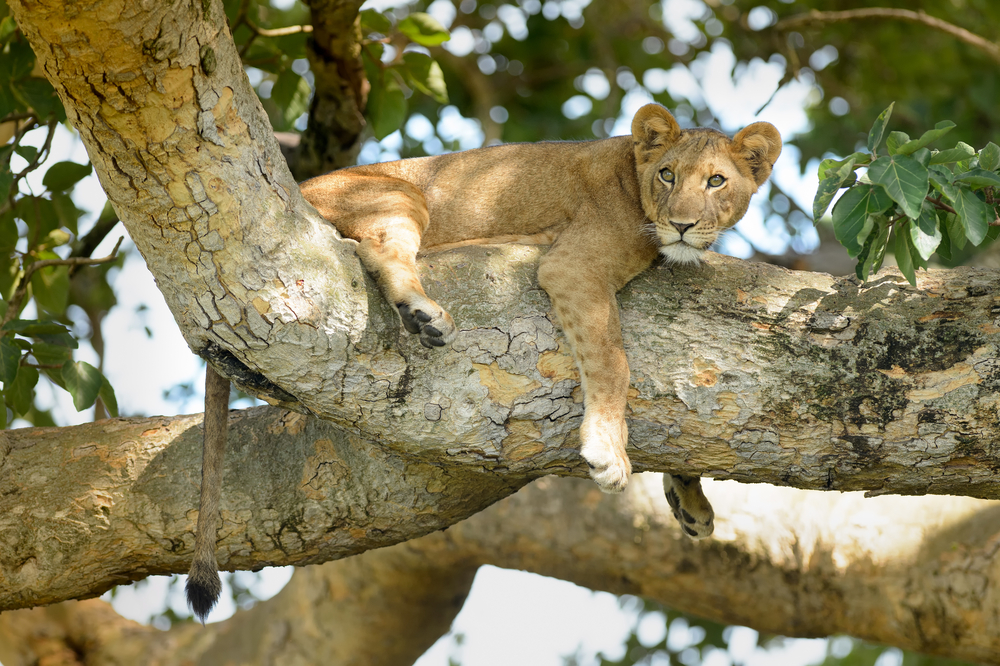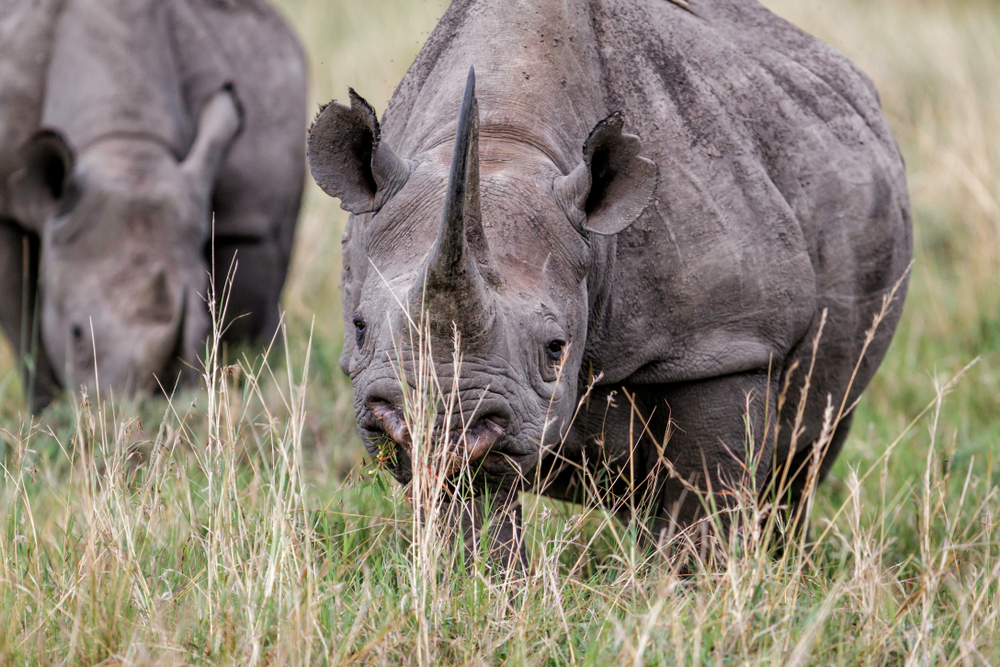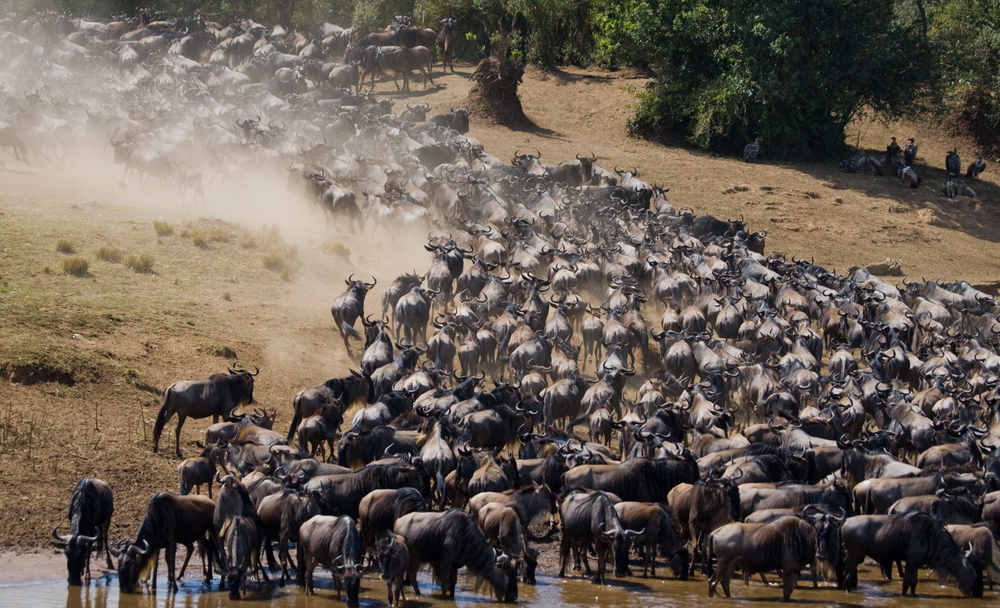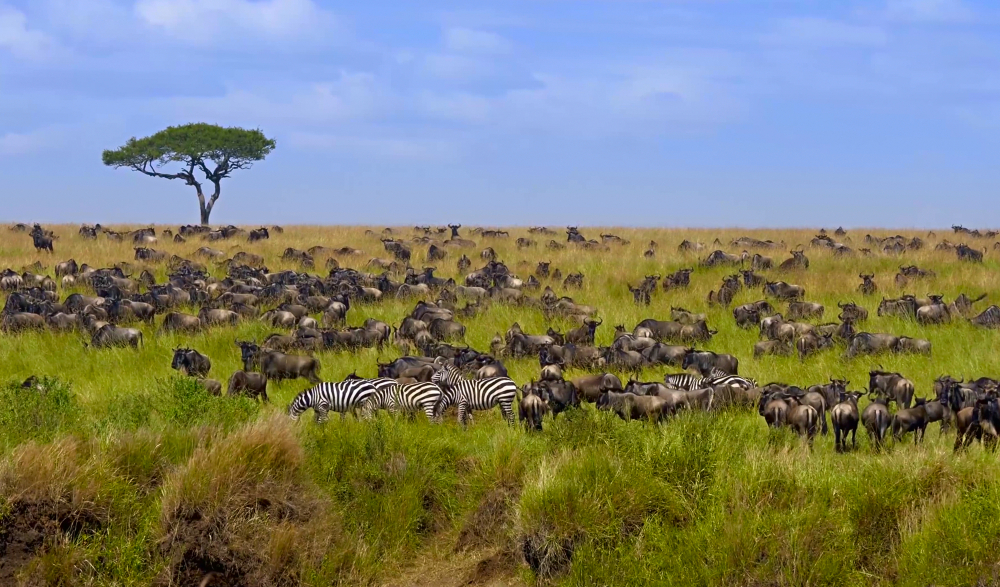Uganda is home to spectacular wildlife encounters like tree climbing lions and mountain gorillas. The Nile River flows through the country creating the powerful Murchison Falls. This beckons the question of when is the best time to visit Uganda.
Your memorable experience in this East African gem is waiting. Let’s explore the seasons, wildlife opportunities, pricing, and cultural events that determine the the best time to go to Uganda for your dream adventure.
Best Time to Visit Uganda based on the Weather
Uganda’s diverse geography and climate zones offer something for every traveler. Understanding the weather patterns will help you choose the perfect time for your visit.
Dry Season (June to August and December to February): Pleasant Safari Weather
- Weather: The dry season is characterized by warm, sunny days and cool nights. Daytime temperatures hover around 77°F to 86°F (25°C to 30°C), making it perfect for outdoor activities.
- Wildlife: During the dry season, vegetation is less dense, and water sources become scarce, which means animals gather around the remaining waterholes, making it an ideal time for wildlife viewing.
Wet Season (March to May and September to November): Lush Landscapes and Birding
- Weather: The wet season brings occasional rains, transforming the landscapes into lush green expanses. Temperatures remain comfortable, but you should be prepared for occasional showers.
- Wildlife: While the wet season may be less optimal for some wildlife viewing, it’s the ideal time for birdwatching. Migratory birds flock to Uganda during this period, adding color and diversity to the avian population.
Best Time to Visit Uganda to See Animals
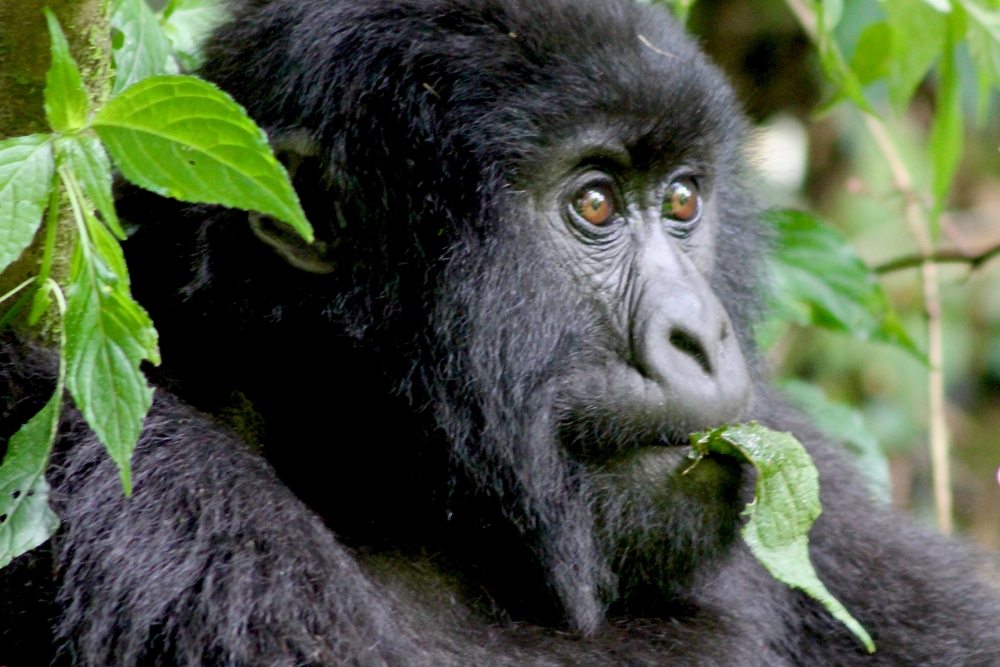
Uganda is home to an incredible array of wildlife, including the famous mountain gorillas. The tree climbing lions are another treasure to anticipate. The timing of your visit can greatly affect your wildlife encounters.
Mountain Gorilla Trekking (Year-round):
- Gorilla Trekking: Gorilla trekking in Uganda can be done year-round. However, the dry seasons (June to August and December to February) are often preferred for better trail conditions.
Safari Adventures (Dry Season):
- Wildlife: If you’re planning a traditional safari to see the Big Five (lion, elephant, buffalo, leopard, and rhinoceros) and other African wildlife, the dry season is the best time. Animal sightings are more predictable due to the concentration around water sources.
- Dry Season: As noted above there are two dry seasons. The first runs from June through August and the second happens between December and February.
Birdwatching (Wet Season):
- Birds: Birdwatchers will find the wet season (March to May and September to November) particularly rewarding. Uganda’s avian diversity shines during this time as migratory birds join the resident species.
Best Time to Visit Uganda based on Prices and Crowds
Your budget and your tolerance for crowds play a significant role in determining the best time to visit Uganda.
High Season (June to September and December to February):
- Prices: This is the high tourist season, and prices for accommodations and tours tend to be at their highest. It’s advisable to book well in advance.
- Crowds: Expect more tourists in popular destinations during this period. Gorilla trekking permits, in particular, can be in high demand, so booking ahead is essential.
Shoulder Seasons (October to November and March to May):
- Prices: Shoulder seasons offer more budget-friendly options. You can often find special deals and discounts for accommodations and tours.
- Crowds: The number of tourists is lower during these months, providing a more intimate experience. Exploring with fewer visitors can enhance your connection with the environment.
Low Season (April and May):
- Prices: The low season, characterized by heavy rains, offers the best value for budget-conscious travelers. Accommodations and tours are typically more affordable.
- Crowds: While visitor numbers are low during the low season, it’s important to be prepared for heavy rains that may affect travel plans.
Discovering Uganda’s Cultural Experiences
Uganda’s rich cultural heritage is celebrated year-round through various events and festivals. Consider timing your visit to coincide with these cultural highlights.
– Imbalu Festival (August): This circumcision ceremony of the Bagisu people is a vibrant cultural event.
– Nyege Nyege Festival (September): This music and arts festival showcases contemporary African culture.
– Royal Kingdoms Coronations (Various Dates): Witness the coronation ceremonies of Uganda’s traditional kingdoms.
– Martyrs’ Day (June 3rd): Celebrate the lives of Christian martyrs at Namugongo Shrine.
Summary
The best time to visit Uganda depends on your interests and priorities. If you’re eager to see wildlife, consider the dry season for optimal safari experiences. Birdwatchers will find the wet season rewarding, while budget-conscious travelers may prefer the shoulder or low seasons.
Planning your trip around Uganda’s annual cultural events can provide a deeper understanding of the country’s vibrant traditions.
Whichever season you choose, you’ll be welcomed by Uganda’s warm hospitality and breathtaking natural beauty, ensuring an unforgettable adventure in the “Pearl of Africa.”

